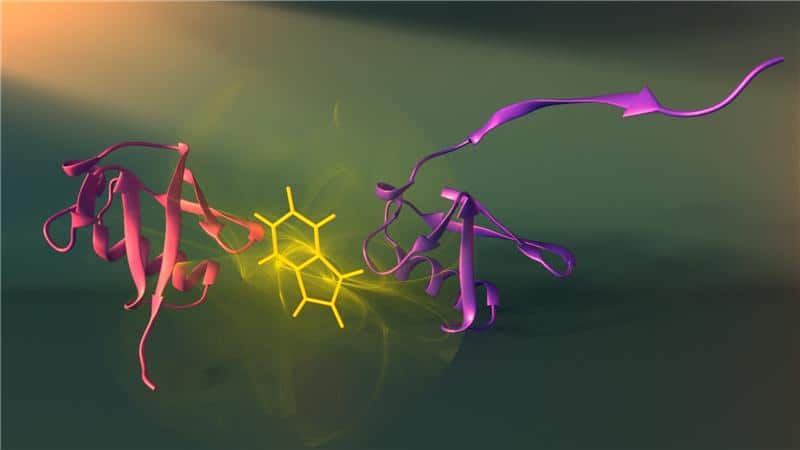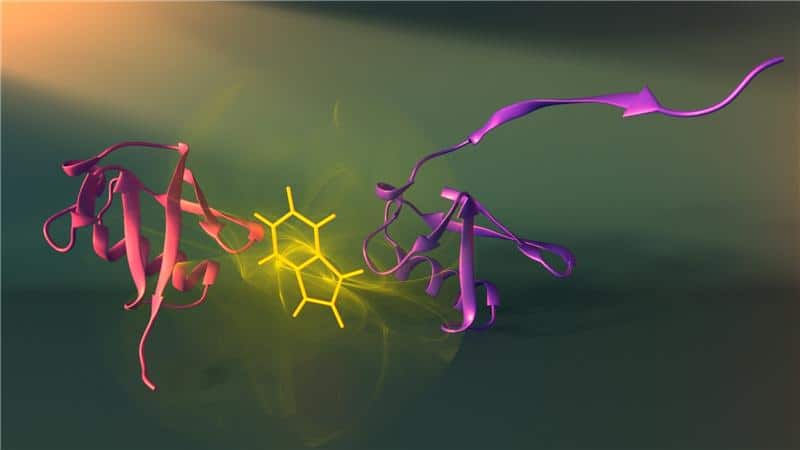
To engineer proteins for use in molecular machine systems leading to advanced nanotechnology, it would be useful to know some of the transient structures through which the protein folds on its journey from a linear chain of amino acid residues to a compact, functional nanomachine. A hat tip to ScienceDaily for reprinting this news release from Université de Montréal, via AlphaGalileo “Researchers watch tiny living machines self-assemble“:
Enabling bioengineers to design new molecular machines for nanotechnology applications is one of the possible outcomes of a study by University of Montreal researchers that was published in Nature Structural and Molecular Biology [abstract]. The scientists have developed a new approach to visualize how proteins assemble, which may also significantly aid our understanding of diseases such as Alzheimer’s and Parkinson’s, which are caused by errors in assembly.
“In order to survive, all creatures, from bacteria to humans, monitor and transform their environments using small protein nanomachines made of thousands of atoms,” explained the senior author of the study, Prof. Stephen Michnick of the university’s department of biochemistry. “For example, in our sinuses, there are complex receptor proteins that are activated in the presence of different odor molecules. Some of those scents warn us of danger; others tell us that food is nearby.” Proteins are made of long linear chains of amino acids, which have evolved over millions of years to self-assemble extremely rapidly – often within thousandths of a split second – into a working nanomachine. “One of the main challenges for biochemists is to understand how these linear chains assemble into their correct structure given an astronomically large number of other possible forms,” Michnick said.
“To understand how a protein goes from a linear chain to a unique assembled structure, we need to capture snapshots of its shape at each stage of assembly said Dr. Alexis Vallée-Bélisle, first author of the study. “The problem is that each step exists for a fleetingly short time and no available technique enables us to obtain precise structural information on these states within such a small time frame. We developed a strategy to monitor protein assembly by integrating fluorescent probes throughout the linear protein chain so that we could detect the structure of each stage of protein assembly, step by step to its final structure.” The protein assembly process is not the end of its journey, as a protein can change, through chemical modifications or with age, to take on different forms and functions. “Understanding how a protein goes from being one thing to becoming another is the first step towards understanding and designing protein nanomachines for biotechnologies such as medical and environmental diagnostic sensors, drug synthesis of delivery,” Vallée-Bélisle said.
This looks like an important step toward a better understanding of protein folding that should improve protein design, but it will be interesting to se how generally useful it is when applied to a wider range of proteins, especially tose proteins specifically designed to fold predictably.
—James Lewis, PhD
